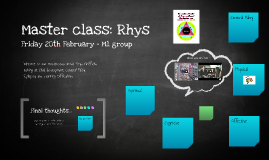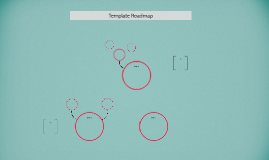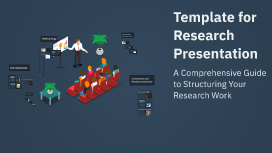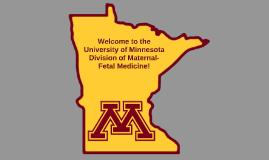Template for MFM presentation
Transcript: Weekly MFM Didactic conference Quarterly MFM/Neonatolotgy joint conference Quarterly fellow-led U/S conference Quarterly Research meetings Quarterly M&M, Journal Club MFM/Mayo joint journal club twice yearly Monthly Fetal Echo conference Shelly Tien, MD, MPH 2015 Northshore Medical Group Evanston, IL Marijo Aguilera, MD Yasuko Yamamura, MD 2008 University of Minnesota Program Basics West Bank Community Involvement Committee Other Great Things About Our Program Moonlighting allowed Opportunities for international work Cultural and socioeconomic diversity of patient population and community Affordable cost of living Year 3 Laura Coultrip, MD Estimated Salary U of MN Medical Center 3-year fellowship 1 fellow per year 3 hospitals Current Fellows Year 2 PGY5: $59,081 PGY6: $61,155 PGY7: $63,111 Conferences Questions? 20 PTO days/year for years 1 & 2 25 PTO days for year 3 Can take in 1/2 day increments up to 1 week per block Conferences do not count against PTO Jessica Nyholm, MD 2010 University of Minnesota $1200 yearly administrative stipend $7500 research fund Department laptop Abbott Northwestern HCMC Welcome to the University of Minnesota Division of Maternal-Fetal Medicine! Free parking at all sites Meal cards Medical and dental Life insurance Liability and disability insurance Paid maternity/paternity leave Other Resources Training Sites Previous Fellows Minnesota! Primary research year 3 months clinical Other Program Benefits Vacation Policy Year 1 Minneapolis Twin Cities Teaching Bethany Hart, DO Year 3 Lisa Gill, MD Year 1 Gauri Luthra, MD Year 2 9 residents per year (36 total) MFM rotation coverage: 3rd-year resident on MFM days 2nd-year resident on MFM days 3rd-year resident on MFM night float 2nd-year resident on Ultrasound 12 med students on OBGYN Clerkship rotations Breakdown of Rotations by Year St. Paul Monisha Gidvani, MD 2011 Obstetrix Medical Group Dallas, TX Lauren Giacobbe, MD 2013 Center for Maternal-Fetal Medicine/High Risk Pregnancy Ctr Las Vegas, NV Clinical Experience Faculty Jessica Swartout, MD 2009 CentraCare Clinic St. Cloud, MN Wide variety of pathology Major referral center for northern Midwest region Diverse patient population Clinical year 8 months at the U (2 months ultrasound, 2 months L&D, 2 months genetics, 2 months of MFM) 1 month at HCMC, 2 months ANW (MFM, ICU) 1 month Research 6 months research 6 months elective Katherine Jacobs, DO 2014 Obstetrix Medical Group Fort Worth, TX - University of Minnesota Starting summer 2015 Marijo Aguilera, MD 2012 MN Perinatal Physicians/ Abbott Northwestern Hospital

















